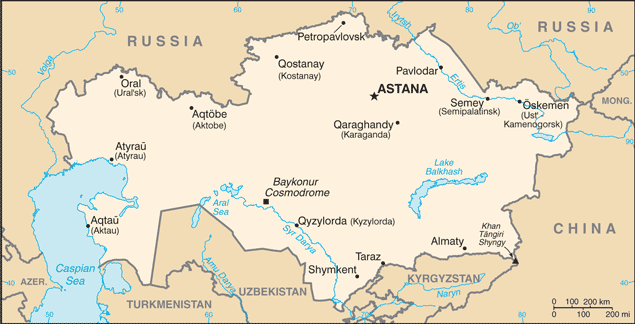Republic of Kazakhstan


Kazakhstan
Capital: Astana
Population: 17,736,896
Languages: Kazakh, Russian
Named the “Dasht-i Qipchaq” by early Muslim travelers and cartographers, the Kazakh Steppe has been the home of varied nomadic and sedentary groups over the millennia. Russian military settlements were established in the region beginning in the late 16th century. Throughout the following centuries, Imperial Russian influence expanded southward and eastward. By the middle of the 19th century, the nominal leaders of the Kazakh “hordes” or nomadic alliances had pledged formal allegiance to the Russian Tsars, and the Russian military had established firm control over the whole of modern day Kazakhstan. Following the Bolshevik Revolution in 1917, Kazakhstan became part of the USSR, gaining full Republic status in 1936. Upon the fall of the USSR in 1991, Kazakhstan received its independence, and in the last twenty years has developed into a regional economic power. Marketing itself as a highly multicultural and heterogenic country, Kazakhstan boasts both vibrant banking, trade, and cultural links with the other nations of Central as well as longstanding ties to Russia. However, its inhabitants face serious questions over the proper division of the influx of wealth from mining, concerns over language and identity, and the continuing rule of Nursultan Nazarbayev, who began as a high ranking Communist Party member. He became the President following independence in 1991 and has retained that title until the present.


